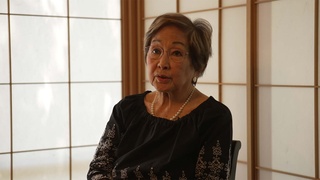Interviews
Family background
Initially, I was born in Seattle.
I*: What year was that?
In ’21. And we lived in Seattle…I don’t know how long. But about 3 years later, we went to Japan for about 6 months. My third brother was born there and then we came back and then we lived in Seattle and Portland for a while because dad was working as a…he was a manju-ya. He made manju – kashi-ya. He trained in Japan and was an excellent kashi-ya. Anyway, he opened his store – the Fugetsu – in Tacoma and had a very successful business. Then finally, in 1931, he had 4 sons. Decided that he was going to move to the country because he wanted his boys to grow up in the country rather than the city. So we moved here to Oregon.
That’s me, Ken, Yosh, and Takashi -- the 4 boys who were living in Tacoma at the time. That’s my father. We think taken in about 1918. He sold his store and decided to be a farmer and he had no experience as a farmer and he had a friend here who was from the same ken (prefecture) – Gifu-ken in Japan – and that was his contact. So he moved…we moved to a place called Hillside, which is about 30 miles west of Portland and got a 30-acre to raise strawberries.
* “I” indicates an interviewer (Akemi Kikumura Yano).
Date: December 6, 2005
Location: Oregon, US
Interviewer: Akemi Kikumura Yano
Contributed by: Watase Media Arts Center, Japanese American National Museum.

